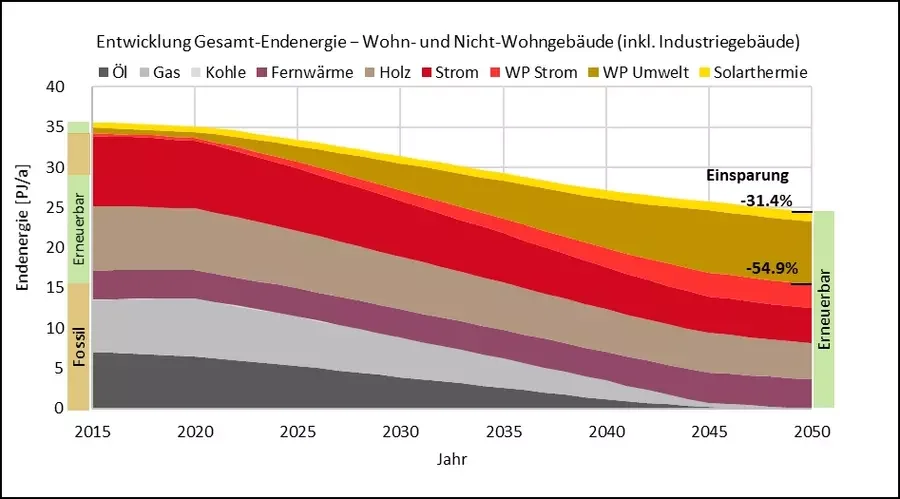Tirol2050
Project manager overall project: Wasser Tirol
Project manager University of Innsbruck: Prof Dr Wolfgang Streicher (UIBK Energy Efficient Building)
Project staff: Dr Fabian Ochs, M.Sc Alice Tosatto
Project partner:
- Wasser Tirol - Ressourcenmanagement-GmbH
- University of Innsbruck:
- Department of Structural Engineering and Material Sciences (Energy Efficient Building Unit)
- Department of Infrastructure (Intelligent Transport Systems - Planning, Construction, Operation and Management Unit)
- MCI - Management Centre Innsbruck (Environmental, Process and Energy Technology)
Funding body: Office of the Tyrolean Provincial Government
Duration: 2020-2021
Project website: https://www.tirol2050.at/
Project report:
Summary: Target scenario - "Our path to Tyrol 2050"
In accordance with international and national guidelines, the province of Tyrol has set itself the goal of becoming energy self-sufficient by 2050 and covering the annual balance of the energy required in the province itself with domestic energy sources.
Based on a preliminary energy mix scenario, this project aims to derive a target scenario "Our path to 2050" that is as general as possible and agreed with political and other stakeholders. In addition, a scenario for achieving the target as early as 2040 will be developed.
Summary: Energy Storage Tyrol 2050
Future energy systems with a high proportion of renewable energy sources are confronted with the limited controllability of electricity and heat generation from solar systems (photovoltaics and solar thermal), wind energy and hydropower as well as the fluctuating demand for electricity and heat.
The purpose of the project, which builds on the previous Tirol 2050 scenarios, is to define which energy storage technologies could be used to what extent in Tirol in order to realise the target value scenario when considering the temporal fluctuations in energy supply and demand up to 2050.
Focus of the project inputs by the Energy Efficient Building Unit
- Preparation and harmonisation of the framework conditions with a focus on the building sector
- Technological presentation of the current energy demand coverage of the buildings sector
- Development of energy demand coverage scenarios for the buildings sector for 2050 / 2040
- Determination of storage technologies available today
- Market analysis of storage models and preparation for awarding contracts
- Support for interactive model calculations

